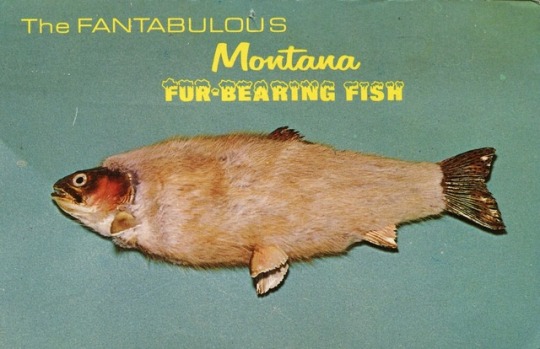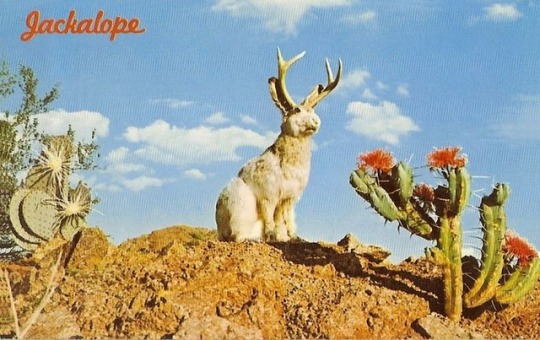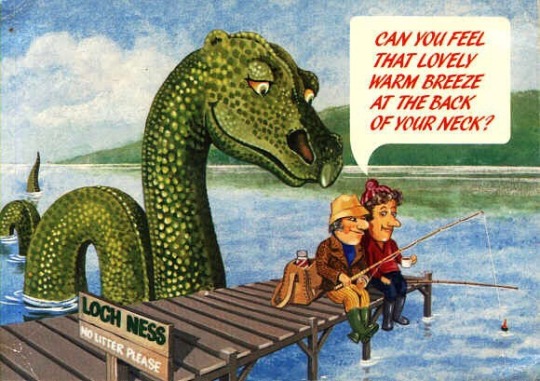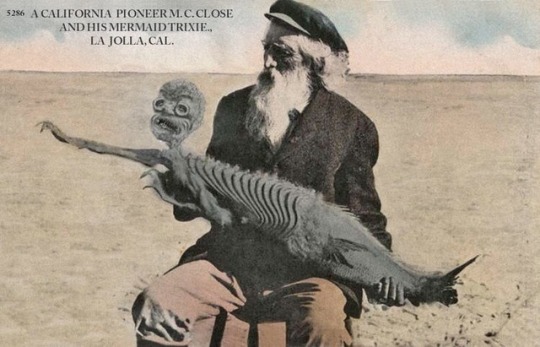Cryptids, paranormal and oddities blog.There will be a mixture of myths, legends and truths. If you like to read about mythological beasts, folklore from around the world, urban legends and paranormal experiences, click follow, I will update daily. Sources will be linked in each post where available.
Don't wanna be here? Send us removal request.
Photo






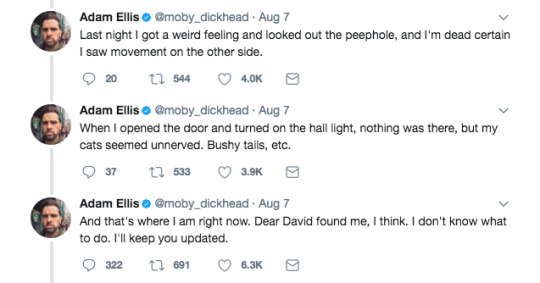


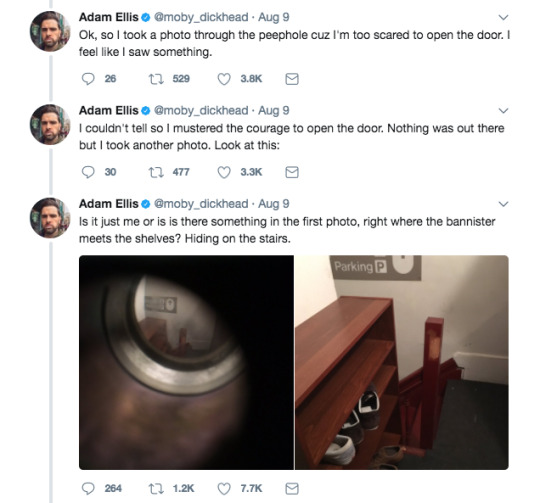
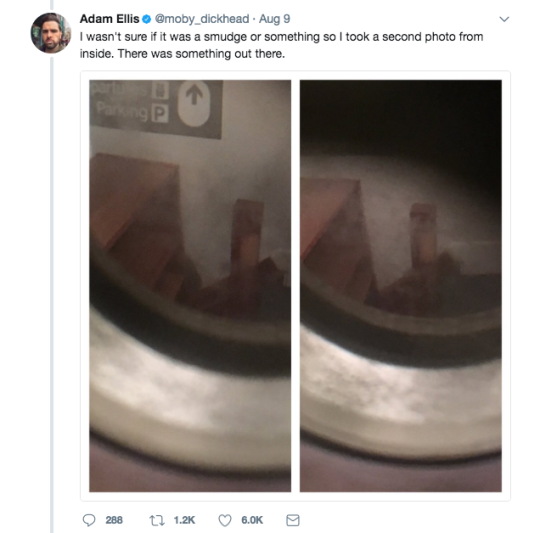
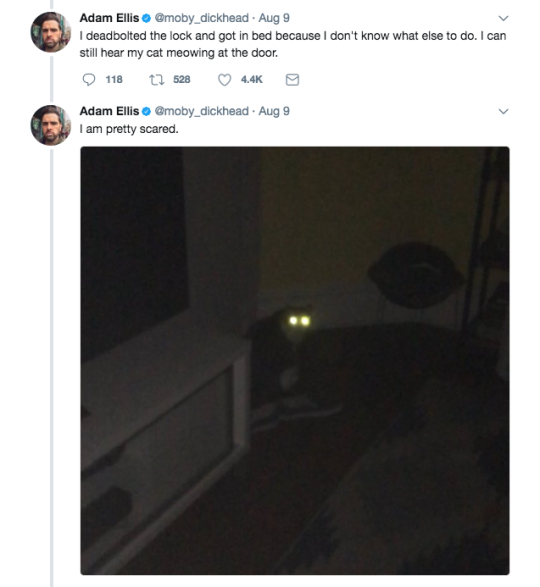

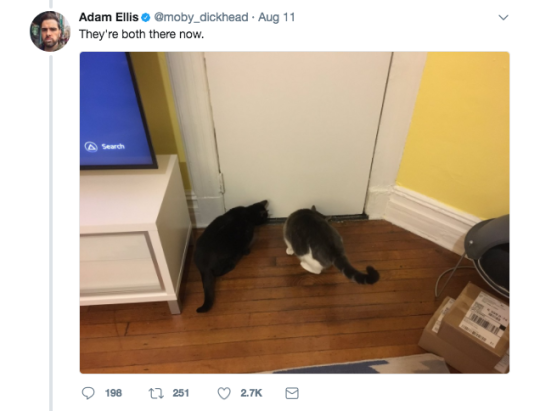


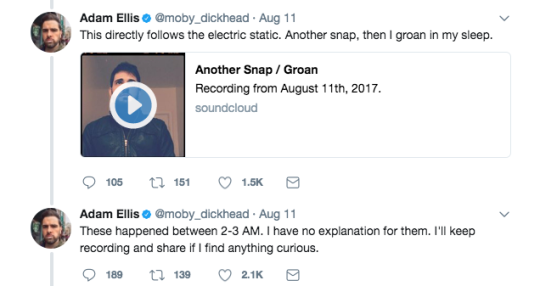

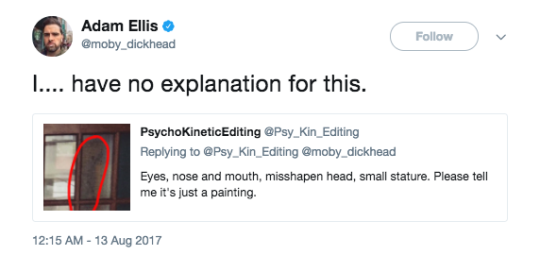


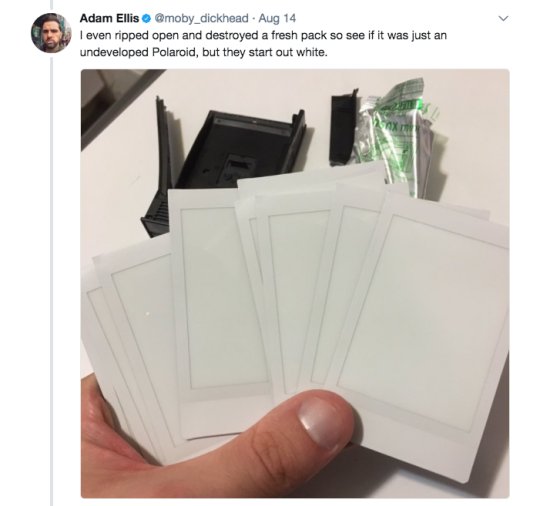
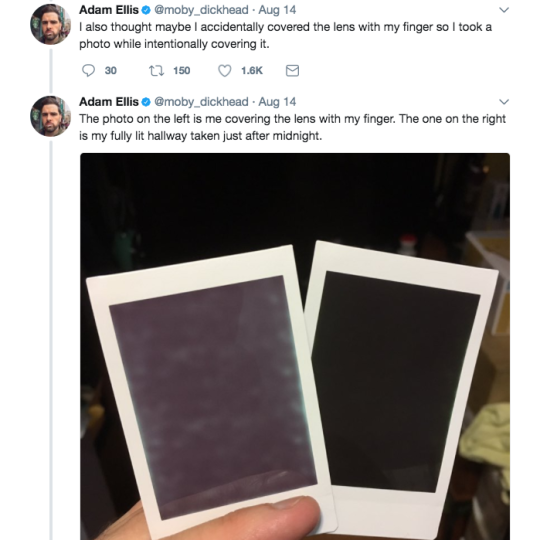


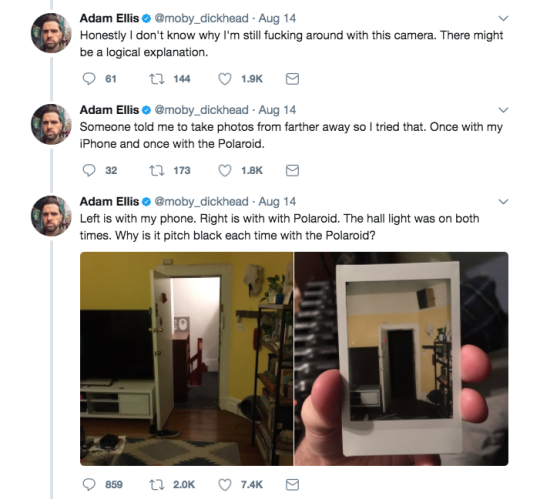







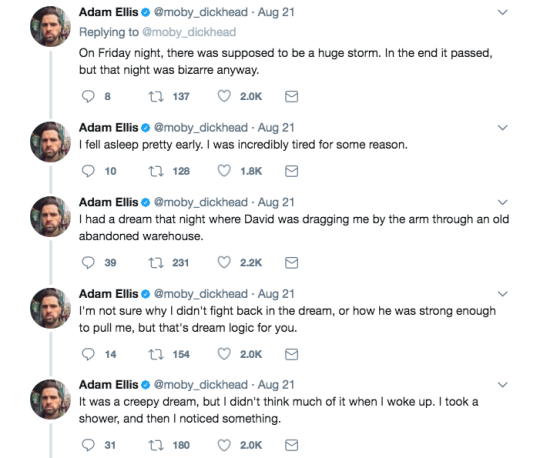
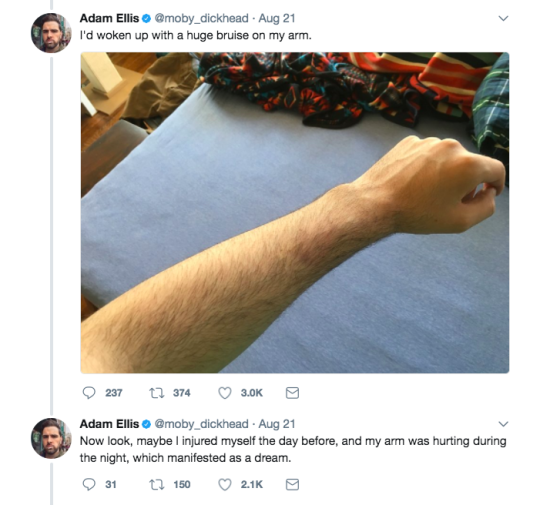




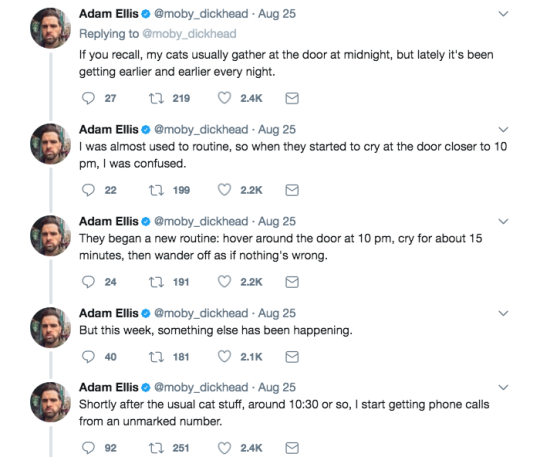



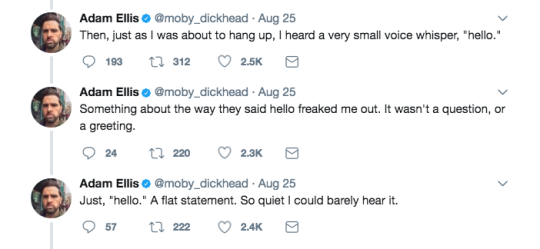







Adam Ellis is either a genius horror storyteller or in grave, grave danger.
296K notes
·
View notes
Photo

Shunka Warak'in
The creature known as the Shunka Warak'in is described as a mix between a wolf and a hyena. The creature was simply a myth until a hunter shot one dead in 1896. Israel Ammon Hutchins shot the famed creature in what is present day Montana. It was purchased by taxidermist Joseph Sherwood who then put it on display in his store in Idaho. Sherwood named the animal “Ringdocus” and the trophy has caused controversy ever since. The stuffed creature currently resides in a museum in Ennis, Montana.
To people’s surprise not a single DNA test has been done on the animal. In fact the museum that’s currently housing the animal doesn’t have legal rights to run tests on it. The museum that has it on display does not actually own it, it is “borrowing” the exhibit from another museum. Cryptozoologist Loren Coleman claims that neither museum wishes for a DNA test to be done because the mystery surrounding the creature is what attracts visitors to see it. The true origins of Shunka Warak'in and what animal it truly is may never be known.
201 notes
·
View notes
Link
It may be the town in which I was born, but West Bromwich in the West Midlands, England, is more readily associated with football, courtesy of West Bromwich Albion FC, than cryptozoology - until the Sandwell Valleygator came on the scene, that is, as now recalled in this ShukerNature retrospective. Also nicknamed the Sandwell Snapper in early media accounts and initially likened to a crocodile, caiman, or alligator, this elusive aquatic cryptid first reared its snouted head on 30 March 1999. That was when fisherman Mike Sinnatt saw what he initially thought to be “a marvellously shaped piece of wood”, measuring over 2 ft long, suddenly come alive and attempt to seize an unsuspecting Canada goose on Swan Pool.
15 notes
·
View notes
Text
The Fresno Nightcrawlers

The Nightcrawler, also called the Fresno Alien, is a cryptid that has so far made two appearances, one in Fresno, California and the other in Yosemite National Park. On both sightings, it was only seen in video footage. It appears to be a relatively short creature (approx. 4 feet in height). It is an extremely thin, white humanoid with no discernible arms. It also appears to be wearing a white gown or cloak of some sort. It is thought to be like a grey.
According to certain Native Americans in the surrounding area, the Nightcrawlers have existed on Earth for a considerable amount of time and come from a planet consisting majorly of swampland. Their long legs are thought to help them maneuver through the boggy terrain. To these Native Americans, the swampworld aliens are here on Earth to assist in an “awakening,” to rebuild the connection between man and nature and subsequently bring peace and harmony to the planet.
834 notes
·
View notes
Photo

Artist’s interpretation of a “Wild Haggis”
Wild haggis (Plural: Haggi) is a fictional creature said to be native to the Scottish Highlands. It is comically claimed to be the source of haggis, a traditional Scottish dish that is in fact made from the innards of sheep (including heart, lungs, and liver).
According to some sources, the Wild haggis’s left and right legs are of different lengths, allowing it to run quickly around the steep mountains and hillsides which make up its natural habitat, but only in one direction. It is further claimed that there are two varieties of haggis, one with longer left legs and the other with longer right legs. The former variety can run clockwise around a mountain while the latter can run counterclockwise. The two varieties coexist peacefully but are unable to interbreed in the wild because in order for the male of one variety to mate with a female of the other, he must turn to face in the same direction as his intended mate, causing him to lose his balance before he can mount her. As a result of this difficulty, differences in leg length among the haggis population are accentuated.
77 notes
·
View notes
Photo

A Tiger Quoll, a possible explanation for Waitoreke sightings.
The Waitoreke (or Waitoreki, Waitorete) is an otter/beaver-like cryptid said to live in New Zealand. It is usually described as a small otter-like animal that lives in the South Island of New Zealand. There are many theories on the Waitoreke's true identity, such as it being an otter, beaver or pinniped.The Waitoreke is usually described as a small otter-like creature sometimes as big as a cat. It is described as having brownish fur and short legs.
The sightings usually place the creature near or in the water on the South Island of New Zealand. Its fur is described as being short like that of an otter.
Very little physical evidence proving the existence of the Waitoreke exists. Julius von Haast is reported to have obtained a Waitoreke pelt in 1868. The fur was brown, with white spots, and the toes lacked webbing. This is inconclusive evidence; the pelt seems to have resembled a quoll's.
Quolls are sometimes claimed to have been released in New Zealand in 1868. The Common Brushtail Possum was successfully introduced in 1858 and is now a widespread pest, whereas introduction of the Common Ringtail Possum ultimately failed. Both animals are unspotted."Evidence" for the existence of the Waitoreke is mainly based on sporadic accounts of an "unidentified amphibious animal" in the country's South Island spanning well over 200 years. Some of the more infamous accounts are dubious and/or incongruous - but a significant number of descriptions (particularly from the late 19th century onwards) share a striking similarity to each other and to species known to exist outside New Zealand. The Māori people said that in old times they used to keep waitoreke as pets.
122 notes
·
View notes
Photo

River otters can be found in the wilds all over Japan. They are under a meter in total length, and well-loved for their shy, playful nature and cute faces.
As with most wild animals in Japan, kawauso develop magical powers upon reaching old age. They are particularly skilled at shape-changing and accurately copying sounds. They love alcohol, and are usually only seen in human areas when trying to acquire sake. They are playful yokai, well known for tricks and mischief, but very rarely dangerous.
Kawauso are fond of playing pranks on humans, especially by mimicking sounds and words. They enjoy calling out human names or random words at strangers walking in the street and watching their confused reactions. They are fond of magically snuffing out lanterns in the night and leaving travelers stranded in the dark. Others transform into beautiful young women and try to seduce young men, and then run away laughing.
Occasionally kawauso do commit more violent deeds. In a few instances near castles in Ishikawa, a kawauso dressed up as beautiful young woman was found luring men to the water’s edge in order to catch and eat them, discarding the half-eaten bodies into the moat.
A Kawauso’s favorite disguise is the form of a young beggar child wearing a big straw hat. They use this child form to sneak into towns and try to buy alcohol from shops. The ruse often falls apart when the disguised creature is asked who it is, or where it came from. Caught off-guard, it simply repeats the last word spoken to it, or makes funny nonsensical noises, ruining its disguise and giving away its supernatural nature.
36 notes
·
View notes
Photo

The jatai is a kimono sash which becomes animated and slithers around like a giant snake during the night.
An old folk belief from Ehime and other parts of Japan says that if you lay your obi out near your pillow while you sleep, you will have dreams about snakes. Because the word for a snake’s body (jashin) is the same as the word for a wicked heart, it is said that the obi itself can manifest a tsukumogami and turn into a murderous agent of jealousy. This snake obi hunts after men, strangling them in their sleep.
37 notes
·
View notes
Photo

Pixiu (also called Tianlu or Bixie) is one of the five auspicious animals of traditional Chinese culture (the other four are the dragon, phoenix, turtle and kylin). The Chinese people call it “fortune beast.” This lion-looking beast has the head of dragon, the body of a horse and the legs of a kylin and is able to fly. The Pixiu is both ferocious and powerful so it works as a security guard of Heaven, resisting demons and ghosts. Just like the dragon and the kylin, the Pixiu brings happiness good luck for people and has an exorcising function. What is different from the kylin is that the Pixiu is a ferocious animal and has strong will in protecting its master. That is the very reason why many Chinese people wear jade Pixius.
The Pixiu has 26 figures and 49 incarnations. As Chinese mythology says, the Pixiu is the Dragon King’s ninth son. Gold, silver, jewels and all other treasures are the Pixiu’s staple food. That gives the Pixiu a noble temperament which helped it win the love of the Jade Emperor and the Dragon King. One day, maybe because it had eaten too much, it relieves its bowels in the Jade Emperor’s palace. The angry Emperor beat it and removed its anus. When news spread among the Chinese people, they regarded the Pixiu as an auspicious animal that can help in making fortunes.
In Chinese mythology, the Dragon King has nine children: Qiuniu, Yazi, Chaofeng, Pulao, Suanni, Bixi, Bi’an, Fuxi and Pixiu. Dragons are believed to have supernatural power in changing weather and ruling the oceans and that is very naturally that its sons are all powerful. In Chinese people’s minds, dragons are a symbol of power and dignity, and that is also one reason why the Chinese call themselves “descendants of the dragon.”
42 notes
·
View notes
Photo

Cardiff Giant is a 10-foot (3.0 m) tall purported "petrified man" uncovered on October 16, 1869, by workers digging a well behind the barn of William C. "Stub" Newell in Cardiff, New York. However, it was realized that it was just a hoax created by New York tobacconist named George Hull. Hull, an atheist, decided to create the giant after an argument with a fundamentalist minister named Mr. Turk about a passage in Genesis that stated that there were giants who once lived on Earth. The idea of a petrified man did not originate with Hull, however. In 1858 the newspaper Alta California had published a bogus letter claiming that a prospector had been petrified when he drank a liquid within a geode. Some other newspapers also had published stories of supposedly petrified people.
Hull had hired men to carve out a 10-foot-long, 4.5 inch block of gypsum in Fort Dodge, Iowa, telling them it was intended for a monument of Abraham Lincoln in New York. He shipped the block to Chicago, where he hired a German stonecutter to carve it into the likeness of a man and swore him to secrecy. Various stains and acids were used to make the giant appear to be old and weather beaten, and the giant’s surface was beaten with steel knitting needles embedded in a board to simulate pores. When the giant had been buried for a year, Newell hired two men, Gideon Emmons and Henry Nichols, ostensibly to dig a well. When they found the Giant, one of them has been attributed to saying: “I declare, some old Indian has been buried here!”.
82 notes
·
View notes
Photo

The Gippsland Big Cat is a cryptid from Australia. Although feral cats are present in Victoria as in the rest of Australia and there have been hundreds of reported sightings, no proof of the existence of big cats has even been established.
Dr John Henry, a researcher from Deakin University, studied the reported sightings from the 1970s and concluded that it was "beyond reasonable doubt" that large cats were roaming the Grampians region. In June 2005 Kurt Engel, a deer hunter from Noble Park, shot what he claimed was a large cat in rugged terrain near the town of Sale. Engel photographed the dead cat, before cutting off its tail and dumping the body in a river. DNA testing results determined that the beast was a feral cat.
The tale of the Gippsland big cat is closely related to similar tales of exotic carnivorous felines that have been reported for many decades in the Blue Mountains, west of Sydney, and commonly known as the Blue Mountains cat.
Some believe that the origin of the Gippsland Phantom Cat, if it did indeed exist, may be traced back to animals let loose by United States soldiers based in Victoria, Australia during World War II. A pair of pumas (or other large cats) were used as mascots. Upon the end of the war, it is speculated that the pumas were released into the wild, somewhere in the Gippsland region (although some claim the cats were released in the Grampians National Park) where they subsequently bred.
125 notes
·
View notes
Photo

Mermaids are known as ningyo in Japanese, but they are very different from the mermaids of Western tradition. Ningyo more closely resemble fish than humans, with a varying level of human-like features, ranging from just an ugly, deformed fish-like face, to an entire human torso with long, bony fingers and sharp claws. They can range in size from the size of a human child to the size of a large seal. Unlike the mermaids of the Atlantic and Mediterranean legends, ningyo from the Pacific and the Sea of Japan are hideous to behold, resembling more of an otherworldly nightmare than a seductive siren.
Mermaids resembling the breeds known throughout the West – with an attractive human torso and a piscine lower body – are not unheard of in the Japanese islands. Particularly since the end of the Edo period and the opening of Japan to the West, more and more Western-style Atlantic mermaids have been seen in Japanese waters. However, the most common Japanese mermaid is more beast than beauty.
Ningyo sightings go back to the earliest written histories of Japan. The first recorded mermaid sightings in Japan are found in the Nihon Shoki, one of the oldest books of classical Japanese history, dating back to 619 CE. The flesh of a ningyo is believed to grant eternal life and youth to those who eat it, and thus it is the subject of many folk tales. However, it carries with it a danger that most people are not willing to risk. Ningyo can place a powerful curse on humans who try to wound or capture them, and some legends tell of entire towns that were swallowed by earthquakes or tidal waves after a foolish fisherman brought home a ningyo in one of his catches. While their grotesque appearance and supernatural powers make them an intriguing subject, they are best avoided at all costs.
748 notes
·
View notes
Photo

Ōkubi appear as enormous, severed heads, which fly through the sky. In most accounts they are female in appearance. Quite commonly they have blackened teeth.
Ōkubi are little threat to humans. Their most common activity is to fly about harassing people: grinning at them, blowing away their umbrellas, or otherwise scaring them. According to some accounts, if an ōkubi breaths on any body part, that part will become inflamed. However, stories about serious injuries or deaths are rare to nonexistent.
Eyewitness accounts of ōkubi were common during the Edo period. In a story from Inou Mononoke Roku, the protagonist Inou Heitarō opens the door to his storage house. He discovers that an enormous head of an old woman—the size of the entire storage house—has taken up residence inside. Curious, he pokes at the head with a long chopstick. Instead of bumping against the forehead of the ōkubi, the head is sticky and mushy and the chopstick slides right in.
20 notes
·
View notes
Photo

The Leshy or Lesovik is a male woodland spirit in Slavic mythology who protects wild animals and forests. There are also leshachikha/leszachka (wives of the leshak) and leshonky (children of the leszy). He is roughly analogous to the Woodwose of Western Europe and the Basajaun of the Basque Country.
A leshy usually appears as a tall man, but he is able to change his size from that of a blade of grass to a very tall tree. He has hair and a beard made from grass and vines, and is sometimes depicted with a tail, hooves, and horns. He has pale white skin that contrasts with his bright green eyes. A leshy has a close bond with the gray wolf, and is often seen in the company of bears as well. He is the forest lord and carries a club to express that he is the master of the wood. He has blue blood, which makes his cheeks the color blue. Legend describes him as having a red scarf and his left shoe on his right foot. He also has no shadow.
Leshy protects the animals and birds in the forest and tells them when to migrate. He can shapeshift into many different forms. As a human, he looks like a peasant with glowing eyes, and his shoes are on backwards.
A person who befriends a leshy can learn the secrets of magic. Farmers and shepherds would make pacts with the leshy to protect their crops and sheep. The leshy has many tricks, including leading peasants astray, making them sick, or tickling them to death. They are also known to hide the axes of woodcutters. A person gets lost in the woods when a leshy crosses their path. To find the way out, you have to turn your clothes inside out and wear shoes on opposite feet.
Leshies are terribly mischievous beings: they have horrible cries, and can imitate voices of people familiar to wanderers and lure them back to their caves, where the leshies will tickle them to death; they also remove signs from their posts. Leshies aren't evil, although they enjoy misguiding humans and kidnapping young women, they are also known to keep grazing cattle from wandering too far into the forests and getting lost. Sometimes cow herders will make pacts with a leshy by handing him their crosses from around their necks and sharing communion with him after Christian church gatherings; these pacts are said to give the cowherds special powers.
Sometimes more than one leshy inhabits a forest, and then they will fight for their territory, knocking down trees and scaring animals.
(Artwork: Lescovik by Slaggs)
922 notes
·
View notes
Photo

Indrid Cold, commonly known as The Grinning Man, is a purported humanoid entity. His name comes from his tendency to smile at those who encounter him.
The Grinning Man is reported to be human-like in appearance, though is commonly associated with UFO activity and is sometimes believed to be an alien. It is also believed possible that he is connected with the Men In Black. In his first sighting, he was described as being over six feet tall and wearing a reflective, green suit with a black belt. He had a dark complexion and small, beady eyes set far apart. He was described as not having any nose, ears, or hair. In his second known encounter, his suit was said to be blue instead of green, but still retained its reflective property.
According to reports made by Woodrow Derenberger, Indrid Cold came from a planet named Lanulo in the Genemedes galaxy, and that there were two other "grinning men" by the names of Demo Hassan and Karl Ardo.
Indrid Cold was first seen on October 16, 1966 when two boys, Martin "Mouse" Munov and James "Jimmy" Yanchitis, in New Jersey were walking on Fourth Street, when they saw a surreal figure standing near a fence. As they walked closer, the figure was a tall bald man wearing a metal green suit who was staring right at them with a huge grin. The idiosyncratic man chased them until they got away from him. UFO sightings were also reported around the area.
On November 2, 1966 in Parkersburg, West Virginia (around the same area and time as the Mothman came about), Woodrow Derenberger was driving his way home on Interstate 77 until he heard a crash. Then, an unidentifiable vehicle appeared to land in front of his truck. He described it as a "an old fashioned kerosene lamp chimney, flaring at both ends, narrowing down to a small neck and then enlarging in a great bulge in the center." The Grinning Man came out of the vehicle with a dark tan, and walked up to Derenberger and telepathically said his name was "Indrid Cold" and he meant no harm. Cold said he just wanted to know more about the human race and he would visit Derenberger again. After the encounter, Derenberger stated that Cold revealed he was from the planet Lanulo in the galaxy of Genemedes.
During the same period in Point Pleasant, West Virginia, the Lilly family had been reporting that poltergeist activity in their home, such as diamond shaped lights. The Lilly's daughter, Linda, was sleeping one night, and awoke to see a man standing over her.
It is commonly believed that the Grinning Man may be an alien entity, and is supported by its close connection with UFO activity and with Derenberger's sighting. It is also said by Derenberger that the Grinning Man is in fact a species of aliens with multiple "grinning men". However, the third sighting by the Lilly family suggests instead that it may be a ghost or spirit of some kind and was connected with poltergeist activity happening in the residence. Others believe that it is a normal human man or a hoax based off of the popularity and fear of the Mothman, who had been first sighted around the same time.
171 notes
·
View notes
Photo

Kasha are a type of bake-neko, or monster cat. They are large, bipedal felines as large as or larger than a human. They are often accompanied by hellish flames or lightning. They like to appear during rainy or stormy weather, and most often during the night. Their name sometimes causes confusion with other yokai; while their name means “fire cart,” they do not use vehicles of any kind.
Kasha, being bake-neko, often live among humans, disguised as ordinary house cats or strays. However, they reveal their true forms during funeral services, when they leap down from rooftops to snatch corpses out of their coffins. Kasha are occasionally employed as messengers or servants of hell, in which case they are tasked with collecting the corpses of wicked humans spiriting them off to hell for punishment. Other times, they steal corpses for their own uses — either to animate as puppets or to eat.
It is nearly impossible to retrieve a person’s remains after they have been snatched by a kasha. This makes passing on to the next life difficult. The best defense is to be prepared; temples in areas where kasha are said to prowl have devised unique ways of defending against these monster cats. In Yamagata, clever priests have taken to holding two funeral ceremonies for the deceased. The first ceremony is a fake — the casket is filled only with rocks, so if a kasha comes for the body it will end up with nothing. The real ceremony takes place afterwards, when the risk of a kasha encounter is lessened. In Ehime, a head shaving razor may be placed on top of the coffin as against kasha. In Miyazaki, priests chant, “baku ni wa kuwasen” and “kasha ni wa kuwasen” (“don’t be eaten by a baku, don’t be eaten by a kasha”) twice times in front of the funeral procession in order to keeps evil spirits away. In Okayama, the priests play a myōhachi — a type of cymbal used in religious ceremonies — in order to keep the kasha away.
Kasha were once ordinary house cats. Like other animals, as they age in years and their tails grow longer, cats begin to develop magical powers. Some turn into bake-neko, more powerful cats turn into neko-mata, and beyond that some turn into kasha. Fear of such demonic cats has long existed in Japan, and since ancient times, folk wisdom tells us, “Don’t let cats near dead bodies,” and, “If a cat jumps over the coffin, the corpse inside the coffin will rise.” Fears such as these have given rise to superstitious traditions such as cutting a cat’s tail short in order to prevent it from learning magic.
28 notes
·
View notes
